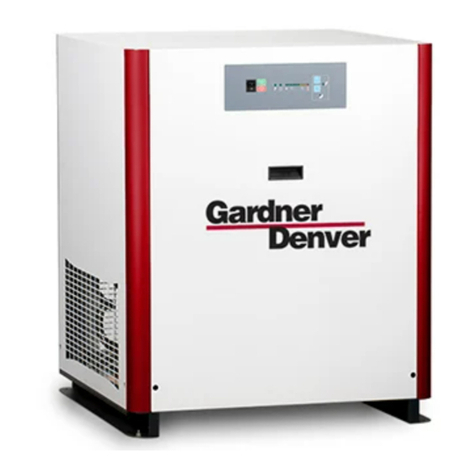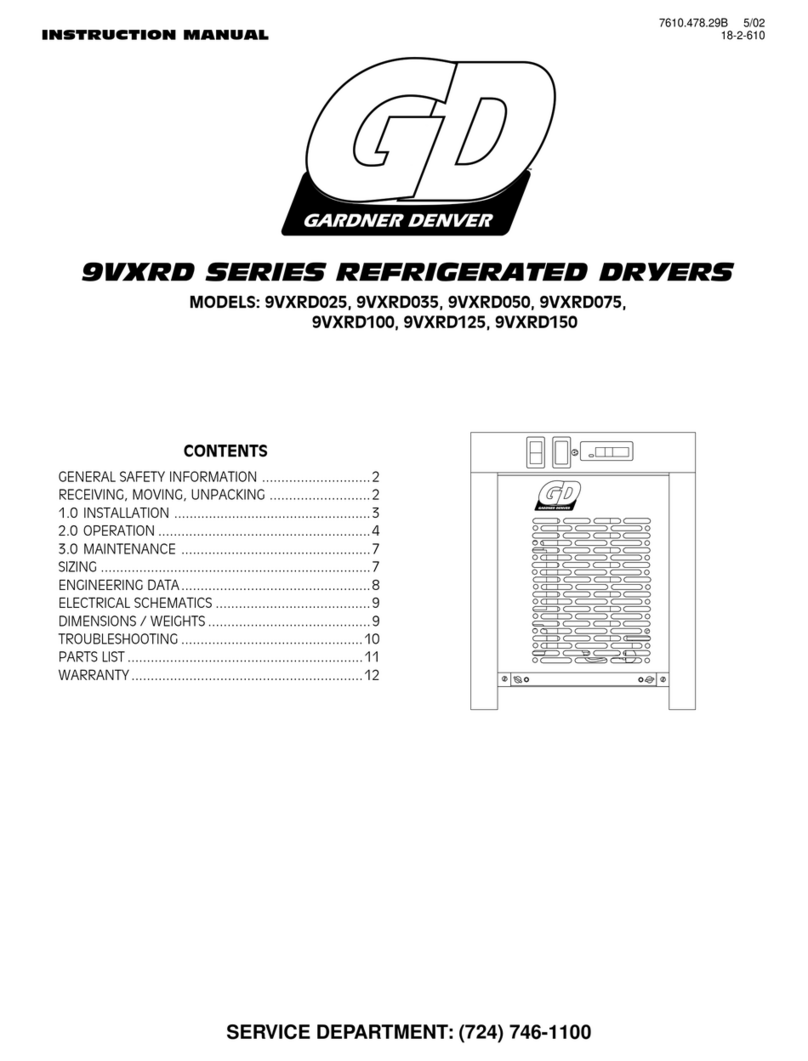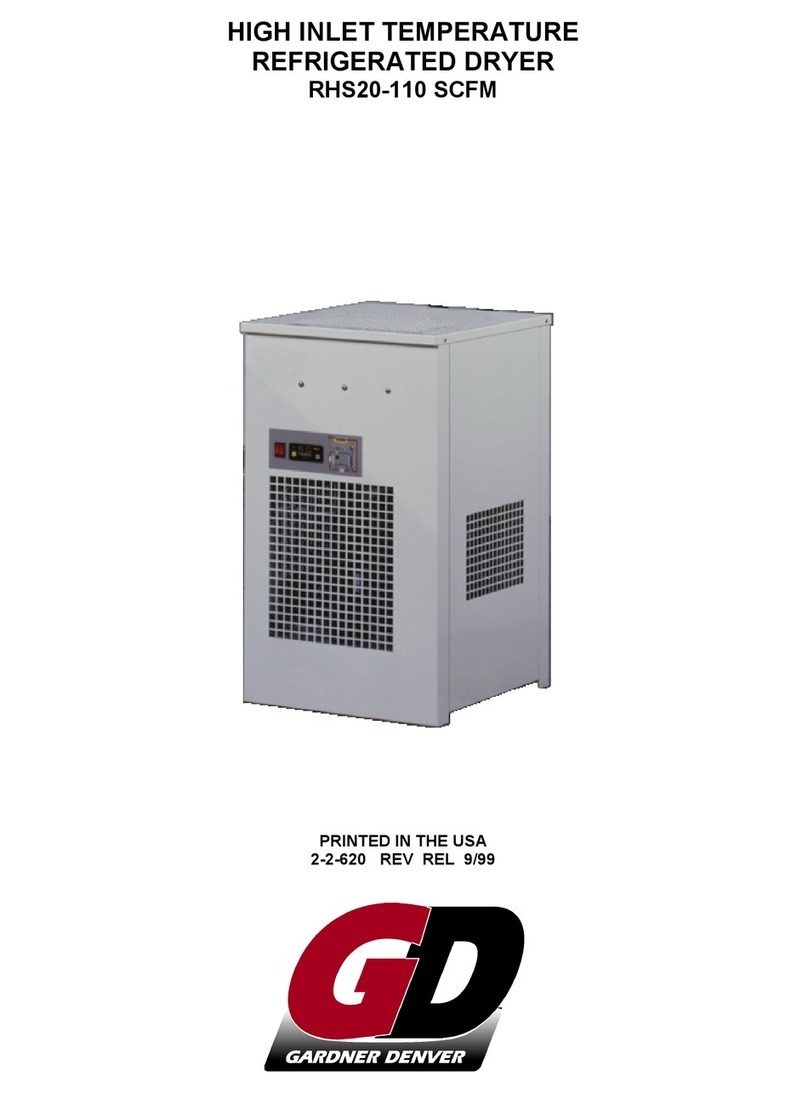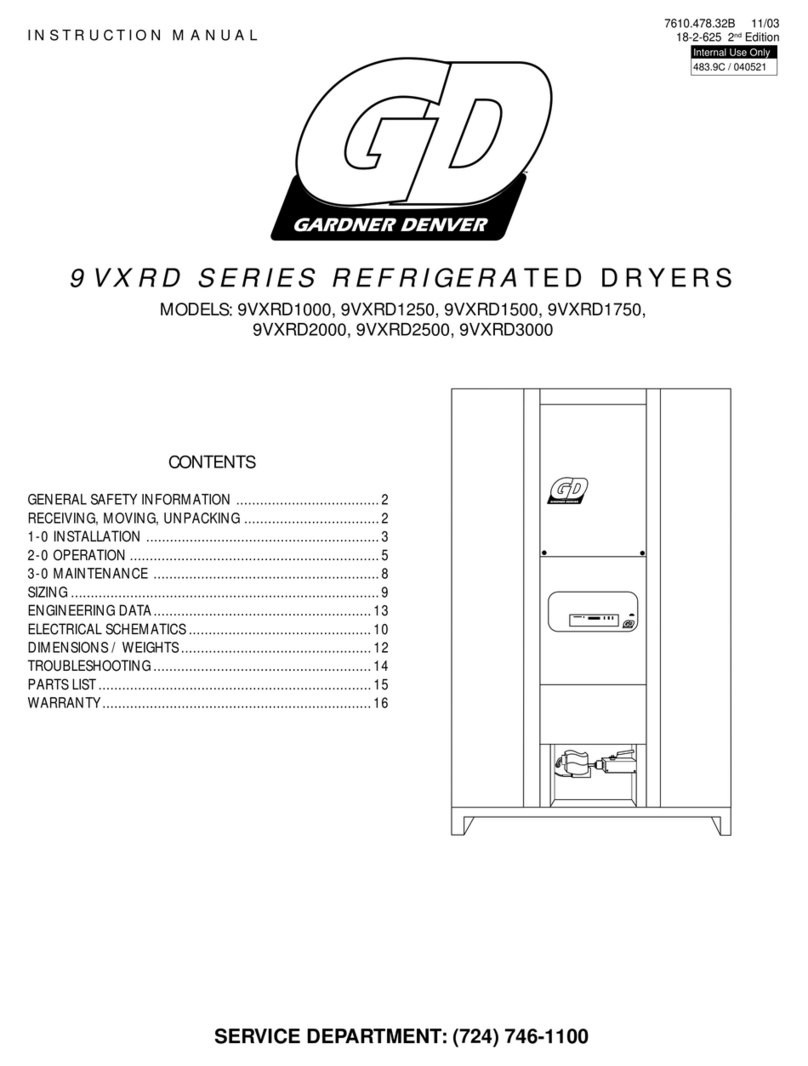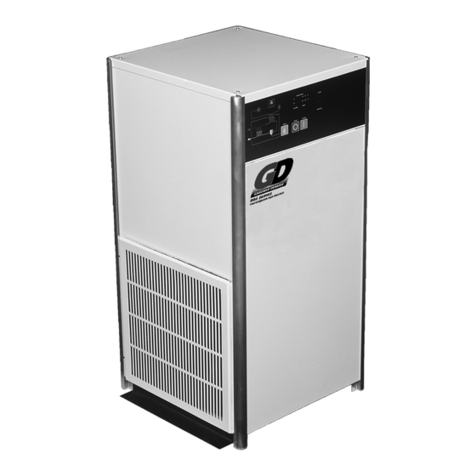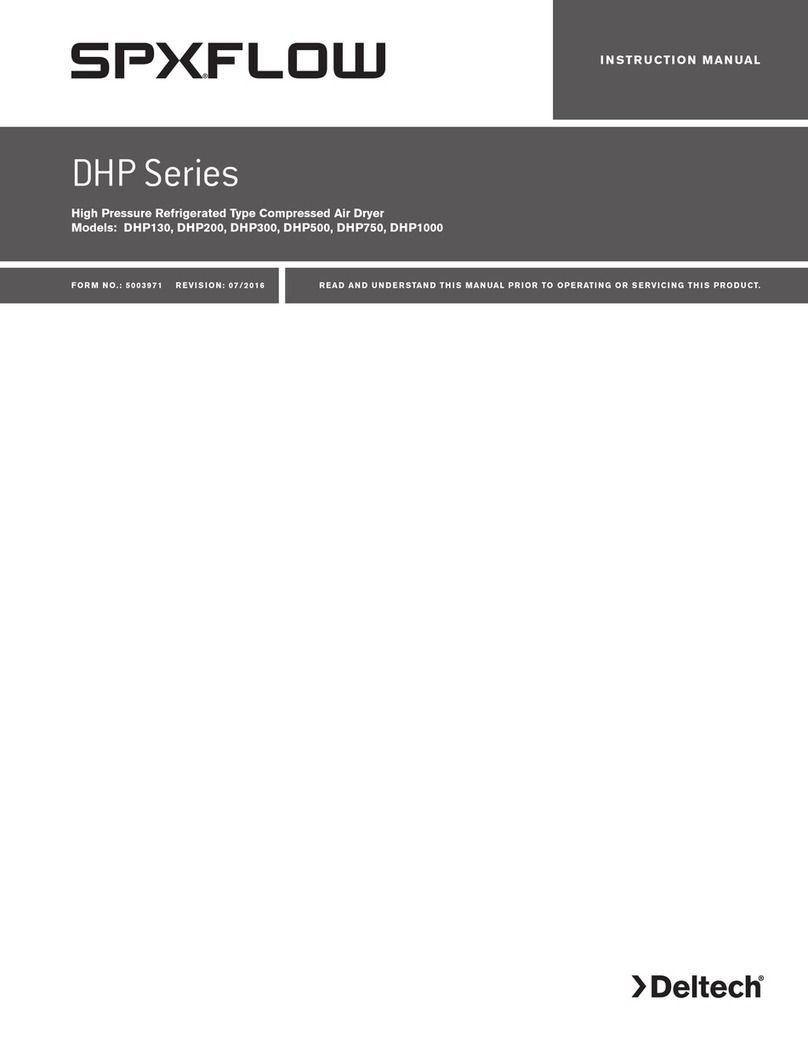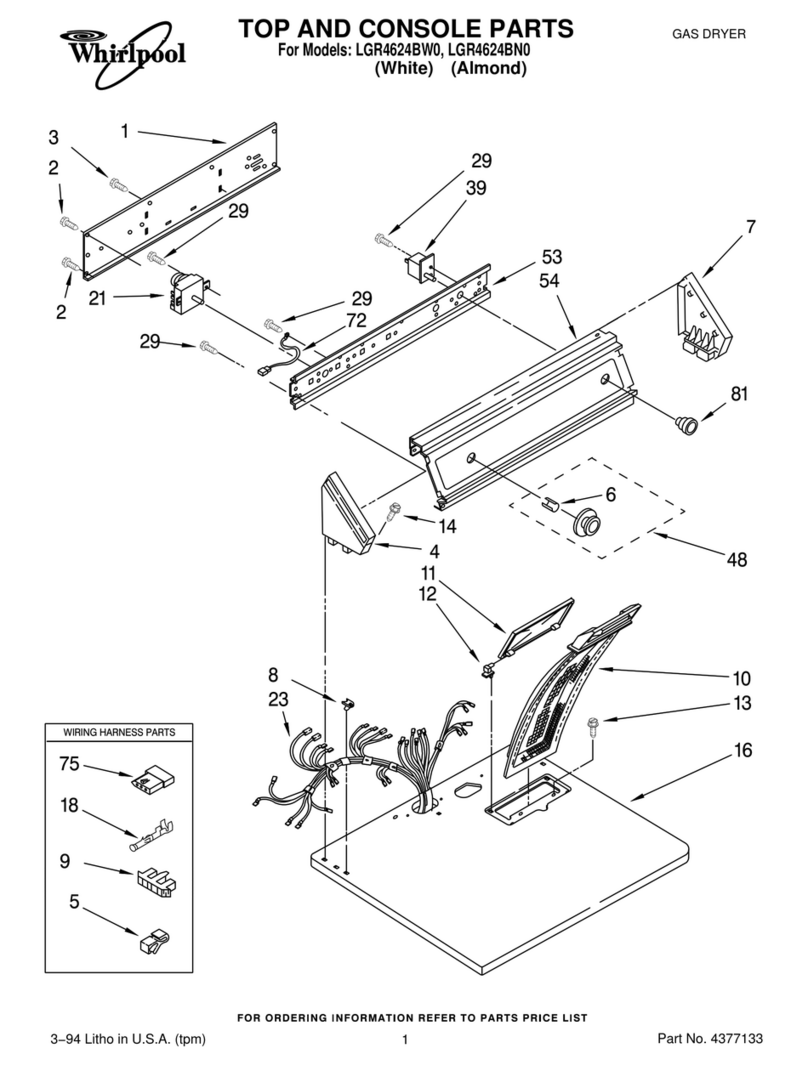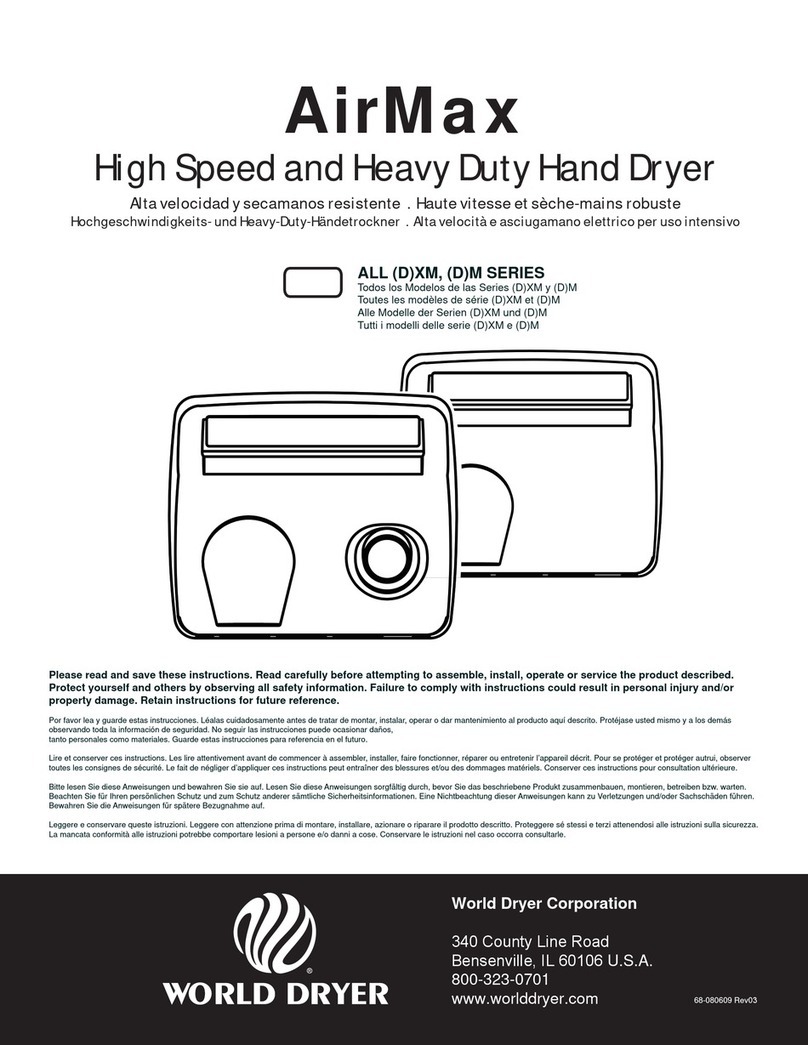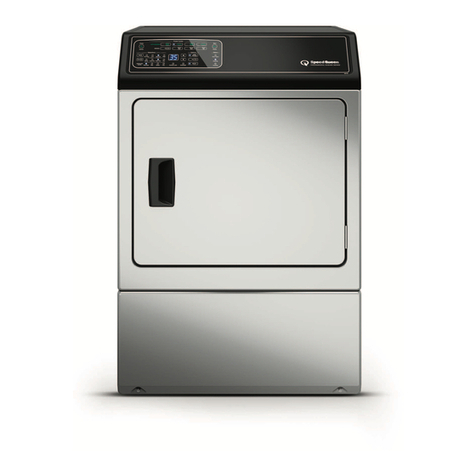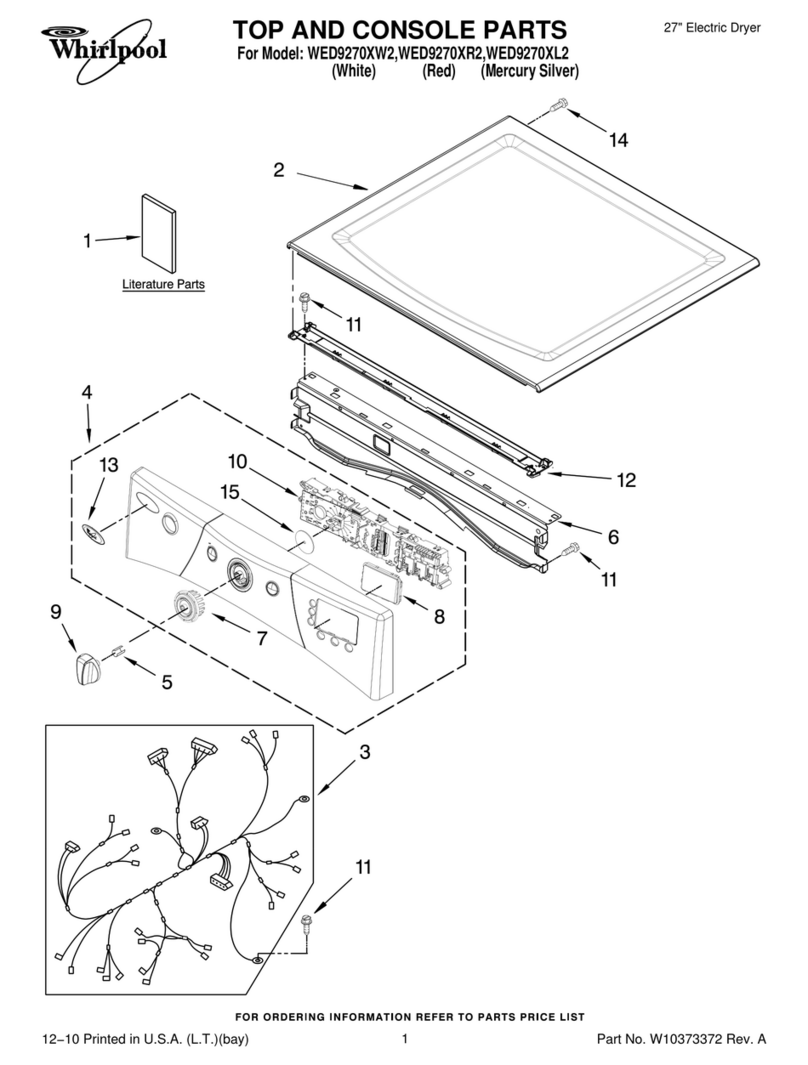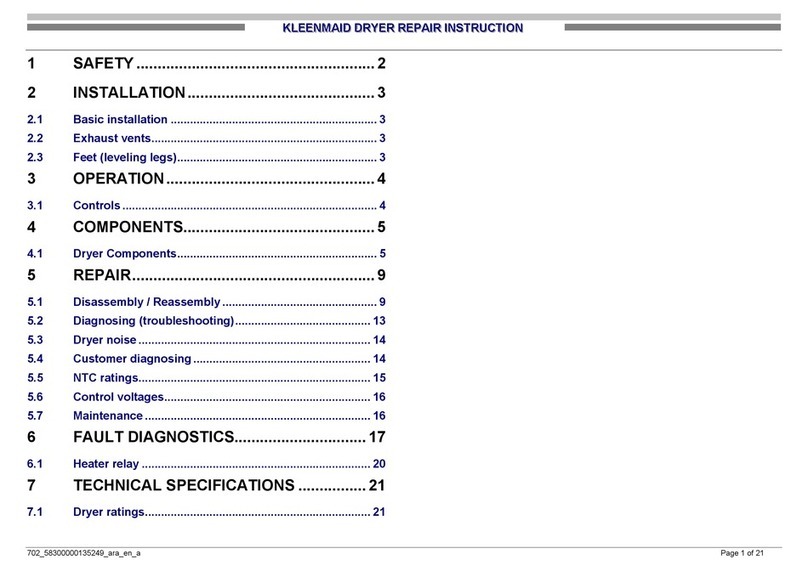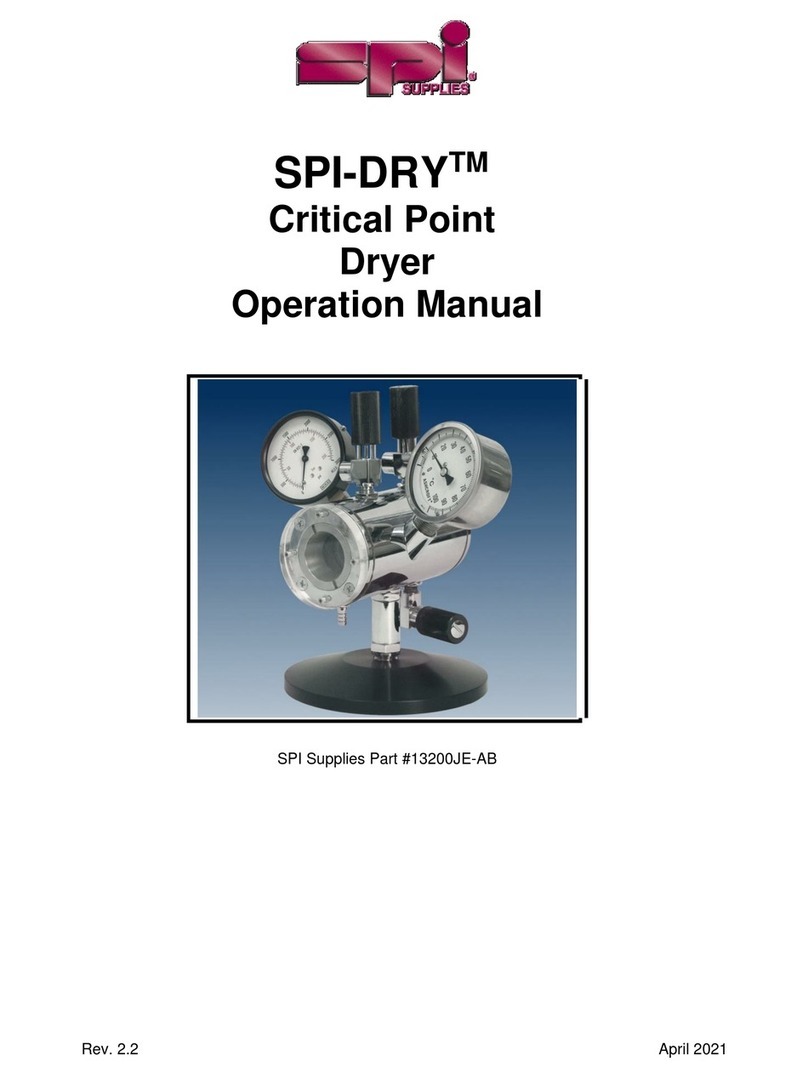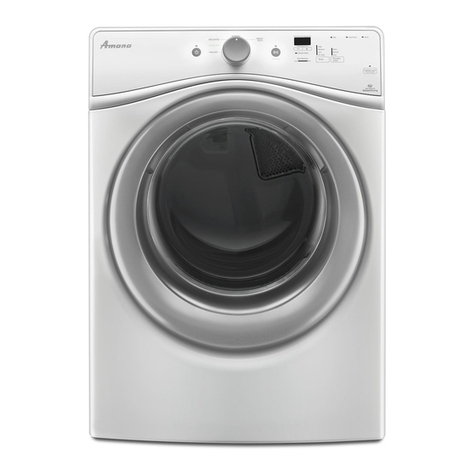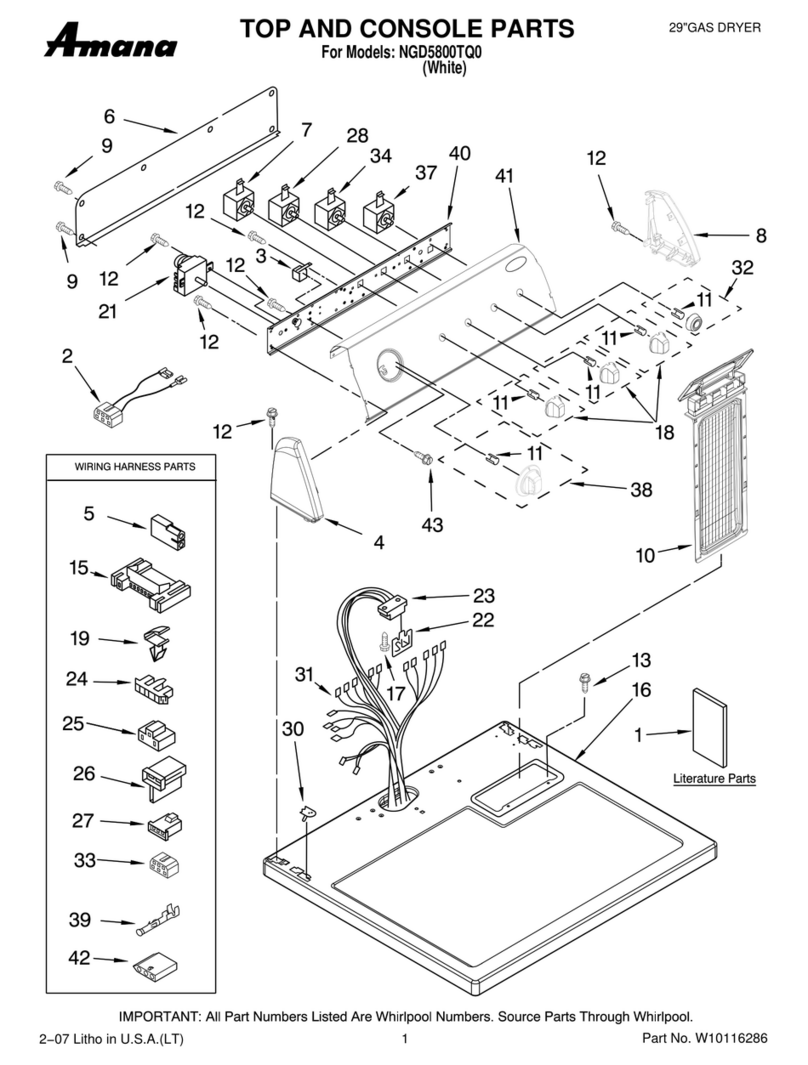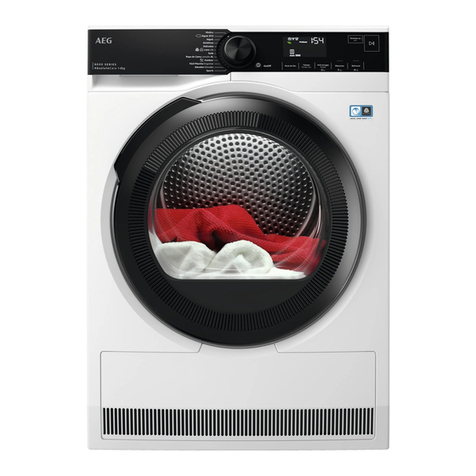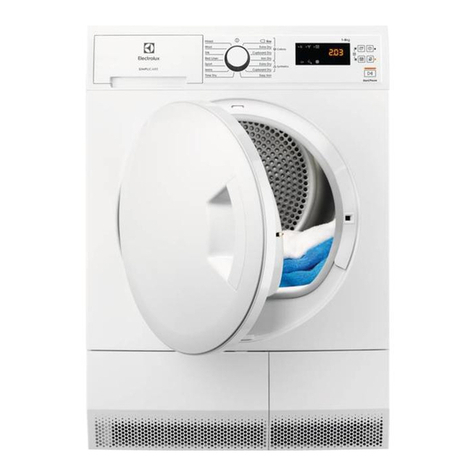
5
WHAT IS TRUE TRACK TECHNOLOGY ?
True Track Technology is a unique control system that conditions power to the compressor varying the refrigeration
system’s capacity to match the requirements for dry air.
As the load is reduced the compressor will be slowed until its output capacity matches the load. The speed of the compressor
(RPM) will vary directly with the changing need for refrigeration capacity, maintaining a consistent dew point. The power
consumption of the unit is directly proportional to the refrigeration capacity of the system, it is subsequently minimized. The fan
motor will be controlled in the same manner. This results in control of the heat transfer from the high temperature reservoir. Flow of
refrigerant in the system is dynamic. Changes in load, ambient, fan on/off all result in reactions by the refrigerant control devises as
they attempt to maintain a constant flow rate. These fluctuations in flow change the capacity of the system and consequently
change the measured output of the system, in this case the Dew Point of the outlet air.
Controlling the fan speed as opposed to cycling the fan reduces the fluctuation of the refrigerant flow improves the system
efficiency and stabilizes the output air dew point. The key to successfully applying True Track Technology to the dehumidification
process is in sensing the incoming load.
The load is indicated by :
The inlet flow rate
The inlet air temperature
The moisture content of the incoming air.
The refrigeration system indicators are:
The Evaporator Outlet temperature
The Low side pressure
This design monitors the Low-side pressure as the measure of the load on the refrigeration system. A pressure transducer
provides the control signal.
The controller maintains a fixed suction pressure over the dryers full flow range. The low-end frequency is set at the minimum
motor speed that provides
adequate oil distribution in the compressor.
The unit has three control modes:
Start-up Mode
•Controlled Acceleration
•The control gradually increases the input frequency and voltage until the motor is at full speed.
•The industry term for this is "SOFT START".
•It greatly reduces the current inrush, necessary to initiate rotation.
•It reduces winding temperatures and prolongs motor life.
Pressure Monitor
•The control monitors the input from the sensing device, decreasing motor speed to raise the pressure or increasing
the speed to lower the pressure.
•As the load on the refrigeration system increases, the pressure rises. The control reacts by increasing the frequency
and voltage to the motor. It speeds up improving its capacity and returning the pressure to the set point.
•As the load on the refrigeration system decreases, the pressure drops. The control reacts by decreasing the
frequency and voltage to the motor. It slows down reducing its capacity and returning the pressure to the set point.
Hot Gas Mode
•As the load on the refrigeration system continues to be reduced and the motor is slowed to the predetermined
minimum (RPM), the control switches to the Hot Gas Mode.
•The control locks the motor speed and initiates hot gas bypass.
•Injecting hot gas from the high side of the refrigeration system in to the low side prevents evaporator and drain
freeze-ups during extremely low demand.
•Increasing the load at this time will switch the control back into the pressure monitor mode and the unit will function
as described above.
All of this creates tight control of the evaporating pressure resulting in tight control of the output pressure dew point. Regulating the
refrigeration system capacity to match the load reduces the overall power consumption of the unit. Locking the hot gas by-pass out
during, the pressure monitor mode increases the full load capacity of the unit.
